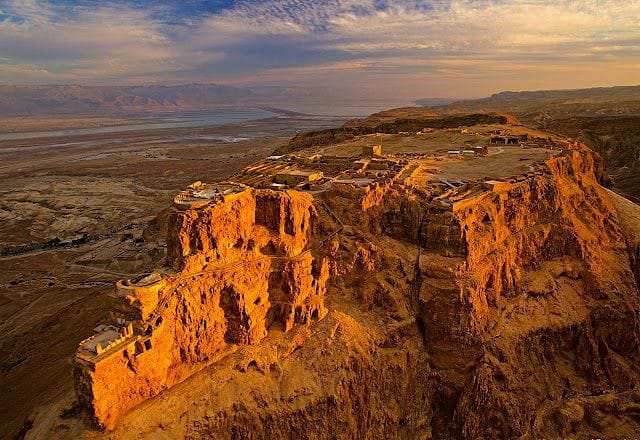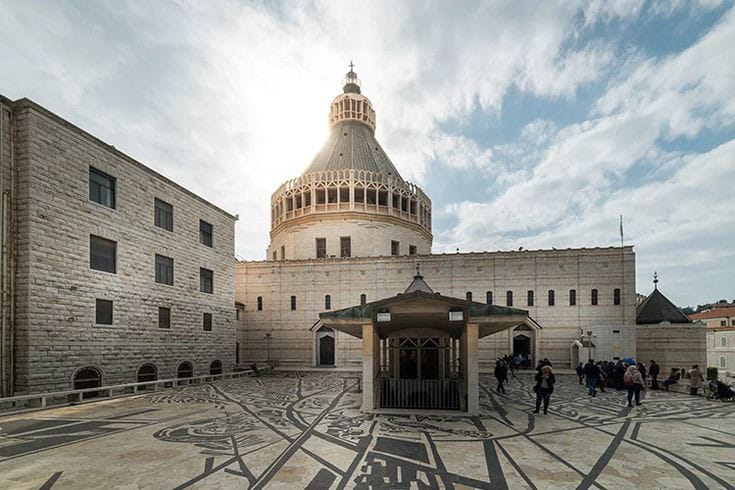Best Places To Travel In Israeal
The Capital of Israeal is Jerusalen
The Old City (Jerusalen)

Israel is a country at the crossroads of ancient history and modern innovation. Located in the Middle East, it is known for its diverse landscapes, from the Mediterranean beaches of Tel Aviv to the arid Negev Desert and the lush hills of Galilee. Israel is a land of contrasts—blending rich historical roots with a dynamic, contemporary culture, high-tech cities with ancient ruins, and diverse religious traditions with a vibrant, youthful energy.
The Old City of Jerusalem is a timeless mosaic of history, faith, and culture, enclosed within ancient stone walls that have witnessed centuries of conflict, devotion, and coexistence. Home to the Western Wall, the Church of the Holy Sepulchre, and the Dome of the Rock, it is a sacred ground for Judaism, Christianity, and Islam. Its narrow alleyways, vibrant markets, and diverse quarters tell stories of empires and religions, making it a profound destination for pilgrims, historians, and travelers from around the world.
Best Months to Visit
Old City of Jerusalem are April to May (spring) and September to October (fall)
Open Days And Timing
The Old City of Jerusalem is a public area and is open every day of the week.
1. The Old City Itself:
– Open 24/7, including all public areas, streets, and general access to quarters.
2. Western Wall (Wailing Wall):
– Open 24 hours a day, 7 days a week.
– Accessible every day, including Shabbat (Saturday) and Jewish holidays.
3. Dome of the Rock and Al-Aqsa Mosque (Temple Mount):
– Open to non-Muslim visitors Sunday to Thursday: 7:30 AM – 10:30 AM and 12:30 PM – 1:30 PM.
– Closed to non-Muslim visitors on Fridays and Muslim holidays. Note that access times may change.
4. Church of the Holy Sepulchre:
– Open daily. Hours vary by season:
– Summer: 5:00 AM – 9:00 PM
– Winter: 5:00 AM – 7:00 PM
5. Markets and Souks:
– Generally open Sunday to Thursday from around 9:00 AM to 6:00 PM.
– Some shops may close earlier on Fridays and remain closed on Saturdays (Shabbat).
6. Jewish Quarter Sites (e.g., The Cardo, Hurva Synagogue):
– Typically open Sunday to Thursday; hours vary by site.
– Closed on Shabbat (Friday evening to Saturday evening) and Jewish holidays.
Ticket
1. Western Wall (Wailing Wall)
– Entrance Fee: Free.
– Notes: Accessible to the public 24/7. However, the Western Wall Tunnels, which offer guided tours of the underground excavations, require a ticket.
2. Western Wall Tunnels
– Entrance Fee: Approximately 30-40 NIS (Israeli Shekel) for adults; discounts available for children, seniors, and students.
– *Notes*: Guided tours only; it is advisable to book in advance.
3. Dome of the Rock and Al-Aqsa Mosque (Temple Mount)
– Entrance Fee: Free for entry to the Temple Mount area; however, entry to the Dome of the Rock and Al-Aqsa Mosque is restricted to Muslims only.
– Notes: Non-Muslim visitors can access the Temple Mount at designated times. Security checks are strict, and modest dress is required.
4. Church of the Holy Sepulchre
– Entrance Fee: Free.
– Notes: Donations are welcome, and some areas may have small suggested donations.
5. Tower of David (Jerusalem Citadel) and Museum
– Entrance Fee: Approximately 40 NIS for adults; discounts available for children, seniors, and students.
– Notes: Tickets are require
Near By Location
1. The Old City
– Divided into four quarters: Jewish, Christian, Muslim, and Armenian.
– Surrounded by ancient walls and filled with historical and religious landmarks.
2. The Western Wall (Wailing Wall)
– The holiest site in Judaism, where Jews from around the world come to pray.
– Located in the Jewish Quarter, it is the last remaining wall of the Second Temple.
3. Dome of the Rock and Al-Aqsa Mosque
– Situated on the Temple Mount, these are some of the holiest sites in Islam.
– The Dome of the Rock is famous for its golden dome and is believed to be the location from where Prophet Muhammad ascended to heaven.
4. Church of the Holy Sepulchre
– Located in the Christian Quarter, this is one of Christianity’s holiest sites.
– Believed to be the site of Jesus’ crucifixion, burial, and resurrection.
5. Via Dolorosa
– The path believed to be the route Jesus walked on his way to his crucifixion.
– Pilgrims often walk along the Via Dolorosa, stopping at the 14 Stations of the Cross.
6. The Tower of David (Jerusalem Citadel)
– A historic fortress near the Jaffa Gate, offering a museum and panoramic views of the Old City and its surroundings.
– The Tower of David Night Spectacular is a popular sound and light show depicting Jerusalem’s history.
7. Yad Vashem
– Israel’s official memorial to the victims of the Holocaust.
– Includes a museum, exhibits, and a moving tribute to the six million Jews who perished during World War II.
8. The Mount of Olives
– Offers a breathtaking view of the Old City and the Temple Mount.
– Home to important sites such as the Garden of Gethsemane, the Church of All Nations, and several ancient Jewish cemeteries.
9. Mahane Yehuda Market (Shuk)
– A bustling marketplace offering a sensory overload of sights, sounds, and smells.
– A great place to experience local cuisine, fresh produce, spices, and Middle Eastern delicacies.
10. Israel Museum
– The country’s largest cultural institution, home to the Dead Sea Scrolls and a vast collection of artifacts, Judaica, and contemporary art.
– The museum’s outdoor sculpture garden is also a popular attraction.
2.Dead Sea
Marada

The Dead Sea is a unique saltwater lake located at the lowest point on Earth, bordered by Jordan to the east and Israel and Palestine to the west. Known for its extremely high salinity, about ten times saltier than typical seawater, the Dead Sea allows visitors to float effortlessly on its surface. The mineral-rich waters and mud are celebrated for their therapeutic properties, attracting visitors seeking wellness treatments. The Dead Sea is also a site of historical and biblical significance, with nearby attractions like Masada and the ancient city of Jericho. Despite its name, the Dead Sea is a vibrant destination for both relaxation and exploration.
Masada is an ancient fortress perched atop a dramatic plateau overlooking the Dead Sea, renowned for its historical and strategic significance. Built by King Herod in the 1st century BCE, it became a symbol of Jewish resistance against Roman rule. The site is famous for the dramatic final stand of the Jewish zealots during the First Jewish-Roman War. Visitors today can explore its well-preserved ruins, including the grand palace, baths, and cisterns, and enjoy breathtaking views of the surrounding desert landscape.
Best Months to Visit
March to May (spring) and September to November
Open Days And Timing
Sunday to Thursday: 8:00 AM – 5:00 PM
Friday and Holiday Eves: 8:00 AM – 2:00 PM
Saturday and Jewish Holidays: Closed or with limited hours, depending on the specific holiday.
Ticket
Ticket Prices (Subject to Change):
– Israeli Citizens:
– Adults: Approximately 30-40 NIS
– Children (ages 5-18): Approximately 10-20 NIS
– Seniors: Approximately 20-30 NIS
– Israeli Army Soldiers: Free or discounted with ID
– Foreign Visitors:
– Adults: Approximately 80-100 NIS
– Children (ages 5-18): Approximately 40-50 NIS
– Students: Discounted rates may apply
Near By Location
1. Ein Gedi Nature Reserve
– Distance: Approximately 25 km (15 miles) north of Masada.
– Highlights: Oasis with lush vegetation, freshwater springs, hiking trails to waterfalls like David Waterfall, and wildlife such as ibexes and hyraxes.
2. Dead Sea
– Distance: About 20 km (12 miles) west of Masada.
– Highlights: The lowest point on Earth with mineral-rich waters ideal for floating and therapeutic mud baths. Popular spots include Ein Bokek Beach and Kalia Beach.
3. Qumran Caves
– Distance: Around 30 km (19 miles) northwest of Masada.
-Highlights: Archaeological site where the Dead Sea Scrolls were discovered. Visit the ruins and a small museum showcasing scrolls and artifacts.
4. Mount Sodom
– Distance: Approximately 35 km (22 miles) southwest of Masada.
– Highlights: A unique mountain made of salt formations. Offers hiking opportunities and spectacular views of the Dead Sea region.
5. Einot Tsukim Nature Reserve
– Distance: About 35 km (22 miles) northwest of Masada.
– Highlights: Nature reserve with lush springs, walking trails, and the remains of an ancient synagogue.
6. Arad
– Distance: Approximately 45 km (28 miles) east of Masada.
– Highlights: A town with access to desert scenery and attractions like the Arad Museum.
7. Mitzpe Ramon
– Distance: About 100 km (62 miles) southwest of Masada.
3.Nazareth
Basilica of the Annunciation

Nazareth is a historic city in northern Israel, renowned for its profound religious significance and vibrant cultural heritage. It is traditionally known as the childhood home of Jesus Christ and a focal point for Christian pilgrimage.
The Basilica of the Annunciation in Nazareth is one of the most significant Christian sites in the world. Built over the location traditionally believed to be where the Angel Gabriel announced to Mary that she would give birth to Jesus, the basilica is a majestic structure with modern and traditional architectural elements. It houses beautiful mosaics, sacred artifacts, and a rich history that draws pilgrims and tourists from around the globe.
Best Months to Visit
Basilica of the Annunciation in Nazareth are March to May (spring) and September to November (fall)
Open Days And Timing
Monday to Saturday: 8:00 AM – 6:00 PM
– Sunday: 8:00 AM – 12:00 PM and 3:00 PM – 6:00 PM
Ticket
The Basilica of the Annunciation, located in Nazareth, Israel, is one of the most significant Christian holy sites. Generally, there is **no entrance fee** to visit the basilica; it is open to the public and accessible to pilgrims and tourists.
However, donations are often welcome to help with the maintenance and preservation of the site. If you are interested in joining a guided tour or special events, there might be additional costs associated with those services. It’s always a good idea to check with local tourism offices or the basilica’s visitor center for the latest information.
Near By Location
1. Church of St. Joseph
– Distance: About 200 meters (0.1 miles) from the Basilica.
– Description: Built on the site traditionally believed to be the home of Joseph, the husband of Mary. The church features a crypt that is thought to be Joseph’s workshop.
2. Nazareth Old Market (Souq)
– Distance: Approximately 300 meters (0.2 miles) from the Basilica.
– Description: A bustling marketplace offering a range of local goods, spices, textiles, and traditional food. It’s a great place to experience the vibrant local culture.
3. Mary’s Well
– Distance: About 1 km (0.6 miles) from the Basilica.
– Description: A historic site where Mary is believed to have drawn water. The area includes a small church and archaeological remnants.
4. Nazareth Village
– Distance: Approximately 3 km (1.9 miles) from the Basilica.
– Description: A living history museum that recreates life during the time of Jesus with interactive exhibits and demonstrations of ancient practices.
5. Mount Precipice (Jebel al-Kafrayn)
– Distance: About 5 km (3 miles) from the Basilica.
– Description: A hill offering panoramic views of Nazareth and the surrounding Galilee region. It is associated with the biblical account of Jesus being threatened with being thrown off a cliff.
6. Church of the Synagogue
– Distance: Approximately 600 meters (0.4 miles) from the Basilica.
– Description: Believed to be located on the site of the ancient synagogue where Jesus taught. It’s an important site for understanding the religious history of Nazareth.
